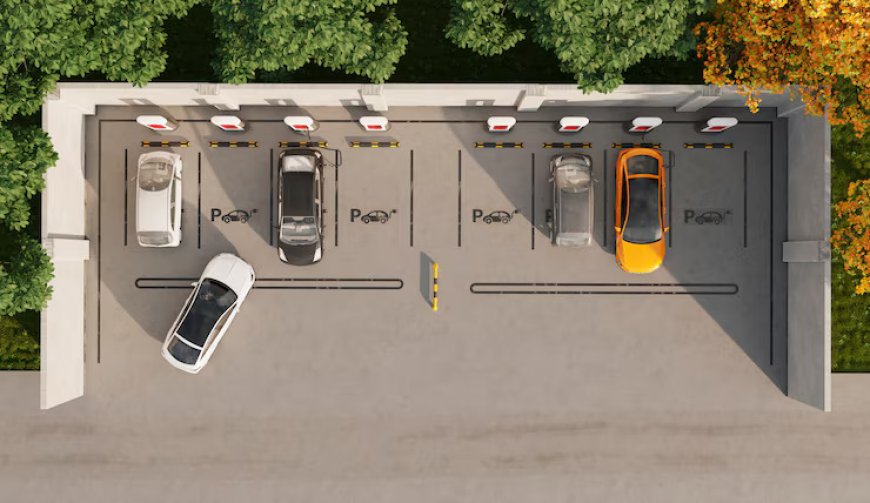Improving Road Safety with Advanced Number Plate Recognition System
Improve traffic enforcement and security with a number plate recognition system that enables real-time vehicle tracking and automated monitoring.

Introduction
Road safety is a critical concern globally, with governments and transportation authorities continuously seeking effective ways to reduce accidents and enforce traffic regulations. The rise in vehicular traffic, especially in urban areas, presents a significant challenge to maintaining order on the roads. Advanced technologies are proving to be indispensable in addressing these challenges, and among these, the number plate recognition system stands out as a powerful tool to enhance road safety and streamline traffic management.
This article explores how modern number plate recognition systems are transforming road safety, enabling smarter traffic control, assisting law enforcement, and ultimately saving lives.
The Need for Advanced Traffic Monitoring
Traffic congestion and violations such as speeding, red-light running, and unauthorized vehicle entry are major contributors to road accidents. Traditional methods of traffic enforcement, which rely on manual observation and periodic police checks, are often inefficient and prone to human error. There is a growing need for automated, reliable, and scalable systems that can continuously monitor vehicular movement and provide actionable insights in real time.
The number plate recognition system offers this capability by automating vehicle identification and tracking, enabling authorities to enforce traffic rules consistently and respond promptly to violations.
How Number Plate Recognition Systems Work
At its core, a number plate recognition system uses cameras combined with artificial intelligence algorithms to detect and read vehicle registration plates as vehicles pass through a checkpoint or a surveillance zone. The system captures the image of the vehicles license plate, processes it through optical character recognition (OCR), and matches it against a database for verification.
This process is rapid, accurate, and can operate continuously across multiple lanes, making it ideal for busy highways, toll booths, parking facilities, and restricted zones.
Enhancing Road Safety with Number Plate Recognition
1. Automated Traffic Law Enforcement
One of the most direct ways that a number plate recognition system improves road safety is through automated traffic law enforcement. By integrating with speed cameras and red-light detection systems, it can automatically identify vehicles that violate traffic rules and generate violation notices without the need for human intervention.
This level of enforcement acts as a deterrent, encouraging drivers to comply with speed limits and traffic signals, thereby reducing accidents caused by reckless driving.
2. Real-Time Monitoring and Incident Response
Advanced systems enable real-time tracking of vehicles involved in criminal activities or those on watchlists. When a vehicle of interest is detected, authorities can be alerted immediately, facilitating swift action. This rapid identification is crucial in preventing potential threats on roads and ensuring public safety.
Moreover, the data collected can be used to analyze traffic patterns, identify accident-prone zones, and deploy resources more effectively to areas that require increased monitoring.
3. Improved Management of Access Control
The number plate recognition system is extensively used for automated access control in gated communities, commercial complexes, and restricted government areas. By ensuring that only authorized vehicles enter these zones, it reduces the risk of unauthorized access, theft, or vandalism, contributing indirectly to safety by minimizing security breaches.
Integration with Other Technologies for Comprehensive Security
A number plate recognition system rarely functions in isolation. For optimal road safety and security, it is often integrated with other technologies such as surveillance cameras, speed sensors, and AI-based analytic tools. This integration enables a holistic approach to traffic management, combining vehicle identification with behavioral analysis.
For example, intelligent systems can integrate with baggage scanners and other security screening technologies at checkpoints, enhancing the overall safety infrastructure by simultaneously monitoring both vehicles and their cargo.
Benefits Beyond Safety: Efficiency and Data-Driven Insights
Beyond improving road safety, these systems contribute to the efficiency of traffic management and urban planning. By collecting comprehensive data on vehicle flow, peak traffic times, and violation hotspots, authorities can make informed decisions on infrastructure development and traffic regulations.
Smart cities increasingly rely on these insights to design better road networks, optimize traffic signals, and manage congestionthereby indirectly reducing the likelihood of accidents caused by traffic jams or poorly managed intersections.
Addressing Privacy and Ethical Considerations
While the benefits of number plate recognition systems are substantial, it is important to address privacy concerns and ensure ethical use. Clear regulations must govern the storage, use, and sharing of vehicle data to protect citizens rights. Transparency in how data is collected and used fosters public trust and supports the continued adoption of these technologies.
Conclusion
The advanced number plate recognition system is revolutionizing road safety by automating vehicle identification and enabling proactive traffic management. Its ability to detect violations, support law enforcement, and integrate with broader security frameworks makes it an essential component of modern urban infrastructure.
By combining these systems with complementary technologies like baggage scanners and video analytics, authorities can build smarter, safer cities where road safety is continuously enhanced through innovation. As technology evolves, the role of automated vehicle recognition will only grow, paving the way for more efficient, secure, and accident-free roadways.











































